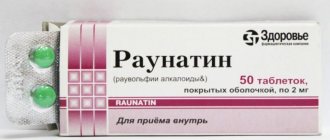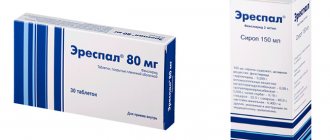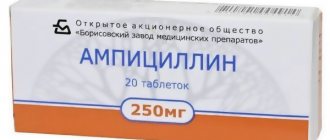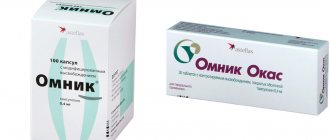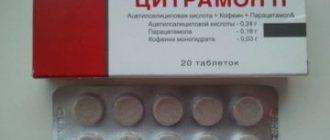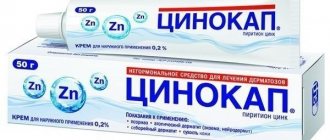Ambroxol is a mucolytic drug with a pronounced expectorant effect. Instructions for use indicate how to properly take 15 mg and 30 mg tablets, syrup for cough therapy and phlegm removal in adults, children (including infants and newborns) and during pregnancy. What Ambroxol helps with, information on prices, analogues and patient reviews will also be presented in the article.
Release form and composition
Ambroxol is available in the form:
- tablets (effervescent and lozenges), lozenges, syrup, inhalation solution;
- solutions for injections, infusions and oral administration;
- hard capsules, retard capsules, concentrate for the preparation of solution for infusion.
Ambroxol tablets contain 30 mg of ambroxol hydrochloride.
5 ml of Ambroxol syrup contains 15 mg of Ambroxol hydrochloride.
Pharmacological characteristics
Mucolytic (sputum thinning) agent with expectorant, secretolytic and secretomotor effects.
Due to the depolymerization of mucopolysaccharides contained in sputum, the drug helps reduce the viscosity of sputum, normalizes the ratio of serous and mucous components, increases the motor activity of the ciliated epithelium, increases mucolytic transport (removal of pathogenic agents) and facilitates the removal of sputum from the respiratory tract.
By having a direct effect on Clark cells located in the bronchioles of the lungs and on type II alveolar pneumocytes, Ambroxol promotes the activation of surfactant (a surfactant that prevents the collapse of alveoli during exhalation).
The therapeutic effect occurs 30 minutes after taking the drug. The duration of action, depending on the dose taken, is 6-12 hours.
Pharmacokinetics
After oral administration, ambroxol is quickly and almost completely absorbed. Tmax is 1-3 hours. Plasma protein binding is approximately 85%. Penetrates the placental barrier and is excreted in breast milk. Metabolized in the liver to form metabolites (dibromanthranilic acid, glucuronic conjugates), which are excreted by the kidneys. It is excreted primarily by the kidneys - 90% in the form of metabolites, less than 10% unchanged. T1/2 from plasma is 7-12 hours. T1/2 of ambroxol and its metabolites is approximately 22 hours.
Due to high protein binding and large Vd, as well as slow re-penetration from tissues into the blood, significant elimination of ambroxol does not occur during dialysis or forced diuresis. The clearance of ambroxol in patients with severe liver failure is reduced by 20-40%. In severe renal failure, T1/2 of ambroxol metabolites increases.
Indications for use
Why is Ambroxol prescribed? Indications for use of the drug are:
- Acute bronchitis;
- Chronic bronchitis of unspecified etiology;
- Bronchial asthma;
- Chronic obstructive pulmonary disease (COPD);
- Bronchiectasis;
- Respiratory distress syndrome in newborns and premature infants;
- Bacterial pneumonia of unspecified etiology;
- Acute and chronic pathologies of the respiratory system, occurring with impaired formation and discharge of sputum.
special instructions
Ambroxol should not be taken simultaneously with antitussive drugs that can inhibit the cough reflex, for example, codeine, because this may make it difficult to remove liquefied mucus from the bronchi.
Ambroxol should be used with caution in patients with a weakened cough reflex or impaired mucociliary transport due to the possibility of sputum accumulation.
Patients taking ambroxol are not recommended to perform breathing exercises due to difficulty in sputum discharge. In critically ill patients, aspiration of liquefied sputum should be performed.
You should not take ambroxol immediately before bed.
In patients with bronchial asthma, ambroxol may increase cough.
In patients with severe skin lesions - Stevens-Johnson syndrome or toxic epidermal necrolysis - a flu-like condition may be observed in the early phase: fever, body pain, rhinitis, cough, pharyngitis. During symptomatic therapy, it is possible to erroneously prescribe mucolytic drugs such as ambroxol hydrochloride.
Instructions for use
Ambroxol cough tablets can be regular, long-acting or effervescent. The tablets should be taken after meals with water.
For adults and children over 12 years of age - standard dosage, according to the instructions for use - 1 tablet Ambroxol 30 mg \ 2 times a day. It can be taken 3 times a day; if necessary, after 8-10 days the dose should be reduced to twice a day.
With exacerbation of chronic diseases, the dose can be increased to 60 mg 2 times a day. The therapeutic dose for children is 1.2–1.6 mg/kg/day in 3 divided doses.
Syrup
Orally for adults and children over 12 years old - 30 mg 2-3 times a day.
Dosage regimen for children under 12 years of age:
- 5-12 years - 15 mg - 2-3 times a day;
- 2-5 years - 7.5 mg - 3 times a day;
- up to 2 years - 7.5 mg - 2 times a day.
In the form of inhalations, adults and children over 5 years old - 15-22.5 mg 1-2 times a day.
Parenterally (intramuscularly, intravenously) for adults - 15 mg, in severe cases - 30 mg 2-3 times a day; children - 1.2-1.6 mg/kg 3 times a day.
For the treatment of respiratory distress syndrome in premature and newborn babies, ambroxol is administered intravenously or intramuscularly at a dose of 10 mg/kg per day, the frequency of administration is 3-4 times a day, if necessary, the dose can be gradually increased to 30 mg/kg per day.
Dosage regimen of Abroxol for inhalation, as well as solution for injection and infusion
Adult patients are prescribed one or two inhalations per day using 3 ml of inhalation solution; Children over 5 years of age are recommended to take one inhalation per day using 2 ml of solution (equivalent to 15 mg of the active substance).
If the drug is prescribed in the form of an injection solution, the optimal dose for an adult patient is from 30 to 60 mg/day. Divide it into three administrations. The maximum single dose is 30 mg.
Typically, the solution is injected into a vein or muscle, although subcutaneous administration is also acceptable. For shock lung syndrome, the dose of ambroxol is 10 mg/kg/day. The drug should be administered 3 or 4 times a day. In cases where it is appropriate, the daily dose is increased to 30 mg/kg. It is administered in 3-4 doses.
Features of treatment with Ambroxol
For treatment to be effective and safe, the following recommendations should be followed:
- Do not exceed the dosage and duration of treatment prescribed by the attending physician.
- If any skin rashes appear. When treated with Ambroxol, you must go to the hospital. Sometimes, when taking this drug, a serious illness occurs - Lyell's syndrome.
- It should be borne in mind that one standard Ambroxol tablet contains a large amount of lactose, which exceeds the daily dose. Patients who have impaired glucose and galactose absorption should refrain from treatment with this medication.
- Ambroxol can increase mucus production, so it should be taken with caution if bronchial motility is impaired.
- Patients with chronic pathologies of the kidneys and liver can take the drug with great caution and only under the supervision of a doctor.
Store both syrup and tablets in a dark place at a temperature of no more than 25 degrees. The shelf life of the drug is 3 years. After opening a bottle of syrup, the expiration date does not change if storage conditions are met.
If there is no effect from treatment with Ambroxol within 2-3 days, you should go to the hospital.
Side effects
The use of Ambroxol may cause the following side effects:
- Respiratory system: rhinorrhea, dry mucous membranes of the respiratory tract;
- Digestive system: dry mouth, diarrhea, constipation, nausea, vomiting, gastralgia;
- Allergies: skin rash, urticaria, allergic contact dermatitis, angioedema, anaphylactic shock;
- Other side effects: exanthema, dysuria, headache, weakness.
Read also: Phyto syrup, drops and tablets Stoptussin: instructions for use and reviews
How to take it for children?
The most common childhood diseases are diseases of the bronchi and lungs, which are usually accompanied by stagnation of sputum in the bronchi. Timely excretion of sputum is an indispensable condition for the normal functioning of the respiratory system, as well as the key to their recovery from diseases.
Ambroxol syrup for children is one of the latest developments in the field of pharmacy. Like other dosage forms, the drug has proven itself to be an effective remedy for the discharge of sputum, so pediatricians recommend it for the treatment of even very young patients.
Instructions for Ambroxol syrup for children
The syrup can have an active ingredient content of 15 mg 5 ml or 30 mg 5 ml, depending on which the dosage of the drug is calculated. Recommended to be taken after meals.
Syrup dosages depend on the child’s age:
- children aged 5 to 12 years – 15 mg 2 – 3 times a day;
- from 2 to 5 years – 7.5 mg 3 times a day;
- up to 2 years – 7.5 mg 2 times a day.
Ambroxol should not be used for more than 5 days without medical supervision.
During the period of use of the drug, drink plenty of fluids (thinning sputum requires taking a large amount of liquid).
How to take ambroxol
"Ambroxol" is a mucolytic drug that promotes the removal of sputum. This product stimulates the formation of surfactant and significantly facilitates the coughing process. You can take Ambroxol in the form of tablets or syrup. "Ambroxol" is prescribed for diseases of the respiratory tract accompanied by the presence of viscous sputum. This remedy is used to treat diseases in acute and chronic forms. In particular, Ambroxol is used to treat bronchitis, bronchiectasis, pneumonia, obstructive pulmonary disease, cystic fibrosis, and bronchial asthma.
Instructions for use
Ambroxol tablets should be taken after meals.
The dosage for adults and children over 12 years of age is 30 mg (1 tablet) per dose. You should drink Ambroxol tablets 2-3 times a day. Children 6-12 years old should be given 0.5 tablets of the drug with the same frequency. If the symptoms of the disease are pronounced in the first 2 days of treatment, the dosage can be doubled: adults - 2, children - 1 tablet per dose. Then you should return to the usual dose. Children are recommended to take the medicine in syrup form. Children 2-6 years old are given 0.5 teaspoon 3 times, children 6-12 years old - 1 teaspoon Ambroxol 2-3 times a day. Adolescents and adults should take 2 teaspoons of syrup 3 times a day during the first 2-3 days of illness, then 1 teaspoon. You should also drink Ambroxol in syrup form after meals. If necessary, you can take the medicine with water. The duration of treatment is determined by the doctor. It is recommended to take this remedy on your own for no more than 5 days.
Contraindications
Pregnant women should not take Ambroxol in the first trimester. At later stages, treatment with the drug is allowed only as prescribed by a doctor, who will determine the possible risks. During lactation, when using Ambroxol, feeding should be suspended. Ambroxol syrup should not be given to children under 2 years of age, tablets should not be given to children under 6 years of age. The drug should not be used if you are intolerant to its components. The drug is prescribed with great caution for peptic ulcers and convulsions.
Cautions
Ambroxol should not be taken simultaneously with cough medicines, since this combination can lead to difficulty in removing phlegm.
During the treatment period, allergic side effects may occur in the form of urticaria, rash, angioedema, and rarely, anaphylactic shock. Dry mouth, constipation or diarrhea, and headache are also possible. With long-term use of high doses of Ambroxol, nausea and stomach pain are possible. In case of overdose, it is recommended to perform gastric lavage. www.kakprosto.ru
Analogs
- Ambrobene;
- AmbroHEXAL;
- Ambroxol Vramed;
- Ambroxol retard;
- Ambroxol-Verte;
- Ambroxol-Vial;
- Ambroxol-Richter;
- Ambroxol-Teva;
- Ambroxol-Hemofarm;
- Ambrolan;
- Ambrosan;
- Ambrosol;
- Bronchoxol;
- Bronchorus;
- Deflegmin;
- Bronchovern Drops;
- Lazolangin;
- Lazolvan;
- Medox;
- Mucobron;
- Neo-Bronchol;
- Remebrox;
- Suprima-coff;
- Fervex for cough;
- Flavamed;
- Halixol.
When choosing analogues, it is important to understand that the instructions for use of Ambroxol tablets and syrup, price and reviews do not apply to drugs with similar effects. It is important to consult a doctor and not change the drug yourself.
Which is better: Ambroxol or Bromhexine?
The active ingredient Ambroxol is an active metabolite of bromhexine hydrochloride (a substance that is a synthetic analogue of the alkaloid vasicine). At the same time, the therapeutic effectiveness of Ambroxol is an order of magnitude higher than that of its predecessor.
In addition, Ambroxol is better tolerated by patients, has virtually no contraindications (even infants and pregnant women can take it), and side effects from its use develop extremely rarely.
Why is Ambroxol prescribed for inhalation?
Ambroxol for inhalation is prescribed to improve sputum discharge and relieve cough in various respiratory diseases.
| Active substance | Ambroxol hydrochloride |
| Description of the dosage form for inhalation | Solution for oral administration and inhalation is transparent, colorless or with a brown tint, weak or no odor |
| Group | Mucolytic agents |
| pharmachologic effect | It has mucolytic, expectorant and antitussive effects. Ambroxol stimulates the cells of the bronchial mucosa, which, under its influence, begin to produce more mucous secretion. Special enzymes are activated, which begin to actively liquefy this secretion, breaking down proteins and reducing its viscosity. As a result, the sputum becomes more liquid, at the same time the epithelial cells are stimulated and the transport of sputum from the bronchi is enhanced. Ambroxol increases the synthesis of surfactant in the lungs, which improves oxygenation. Cough is suppressed to a small extent. |
| Pharmacokinetics | Upon penetration into lung tissue, it is quickly distributed on the surface and begins its effect within 15 minutes, the maximum concentration is reached after 1-3 hours. 90% is excreted in the form of inactive metabolites, which are formed in the liver, through the kidneys. The drug completely leaves the body within a day. In cases of severe renal and liver failure, this time increases significantly, but the medicine does not accumulate in the body. Ambroxol passes into breast milk and through the blood-brain barrier, as well as through the placenta. |
| Storage conditions, expiration date | Store in a dry place, protected from light, at a temperature of no more than 25 degrees, out of reach of children. Shelf life – 3 years |
| Release from pharmacies | Available without a prescription |
Ambroxol also exists in other dosage forms - tablets and syrup. It is extremely rare to use a solution in ampoules for intravenous, intramuscular or subcutaneous administration. The production of the drug is mainly concentrated in Russia, some analogues are made in Germany, Switzerland, Austria and even China.
Drug interactions
The use of Ambroxol in combination with antibiotics helps to increase the concentration of the active substance of the latter in the bronchial mucosa and pulmonary alveoli, which in turn improves the clinical situation with bacterial infections of the lungs.
The combination of a drug with antibiotics has an advantage over the use of an antibiotic alone, even in cases where the effectiveness of an antibacterial drug has been proven.
Ambroxol enhances the effect of Ampicillin, Amoxicillin, and Theophyllinum and promotes their better penetration into bronchial secretions.
No antagonistic interactions of the drug with diuretics and cardiac glycosides have been identified.
The use of Ambroxol with drugs that suppress the cough reflex significantly complicates the discharge of sputum while reducing the intensity of the cough.
The drug is compatible with drugs that are used to slow down labor.
During pregnancy and breastfeeding
The use of Ambroxol at the beginning of pregnancy is not indicated. In the 2nd and 3rd trimesters, the medication is prescribed strictly by a doctor. After assessing the expected benefit to the woman and the potential harm to the fetus. The drug easily crosses the placental barrier. Therefore, there are known cases of it being prescribed to the mother if an unborn baby is diagnosed with accumulation of sputum in the respiratory organs.
On a note! During pregnancy and lactation, it is most advisable to use Ambroxol in the form of inhalations.
During lactation, subject to treatment with Ambroxol, the issue of transferring the child to artificial feeding is considered. This is due to the fact that the active component enters the child’s body through mother’s milk.
What do the reviews say?
The use of an inhalation solution, injection solution, syrup or Ambroxol tablets - reviews are proof of this - enhances the formation of an agent that clears mucus from the bronchi and lungs, and also prolongs its action.
Reviews of Ambroxol syrup indicate that this drug has virtually no drawbacks. It effectively eliminates unpleasant symptoms of the disease, relieves inflammation and stimulates the synthesis of immunoglobulin, which in turn helps strengthen local immunity.
789




